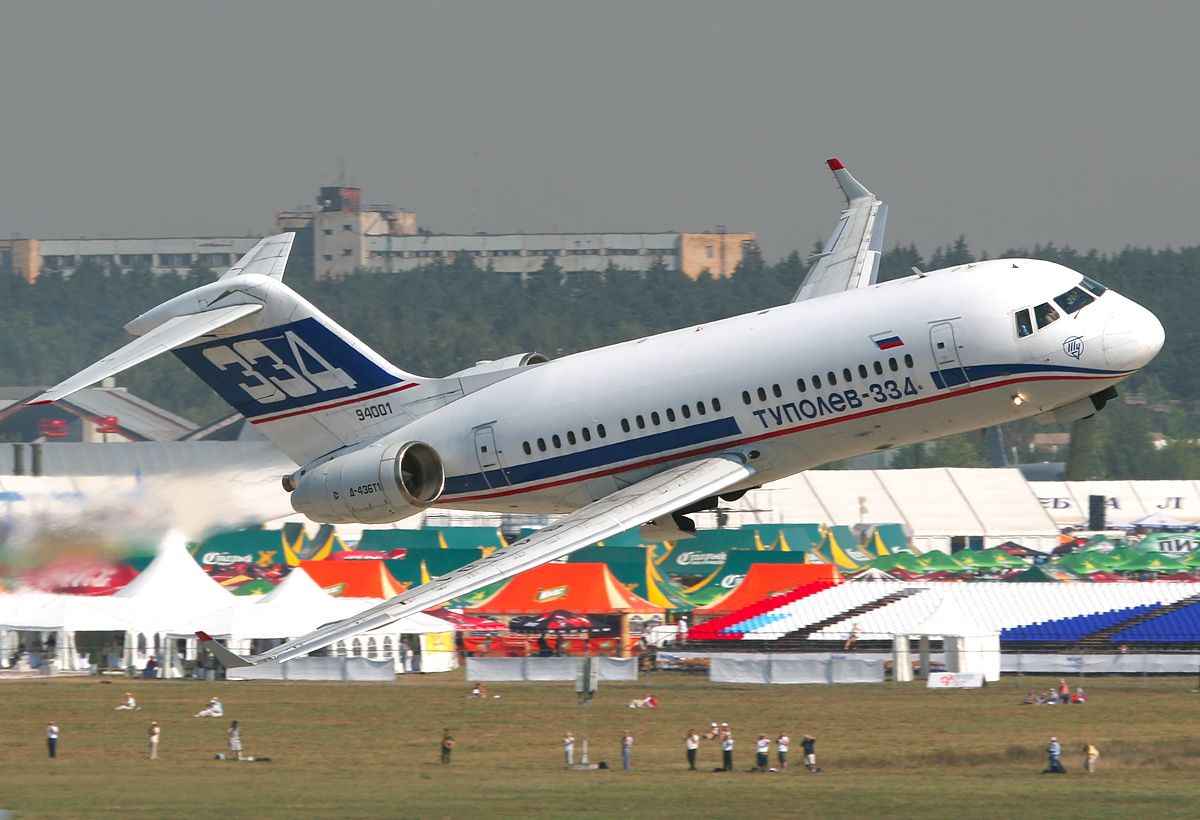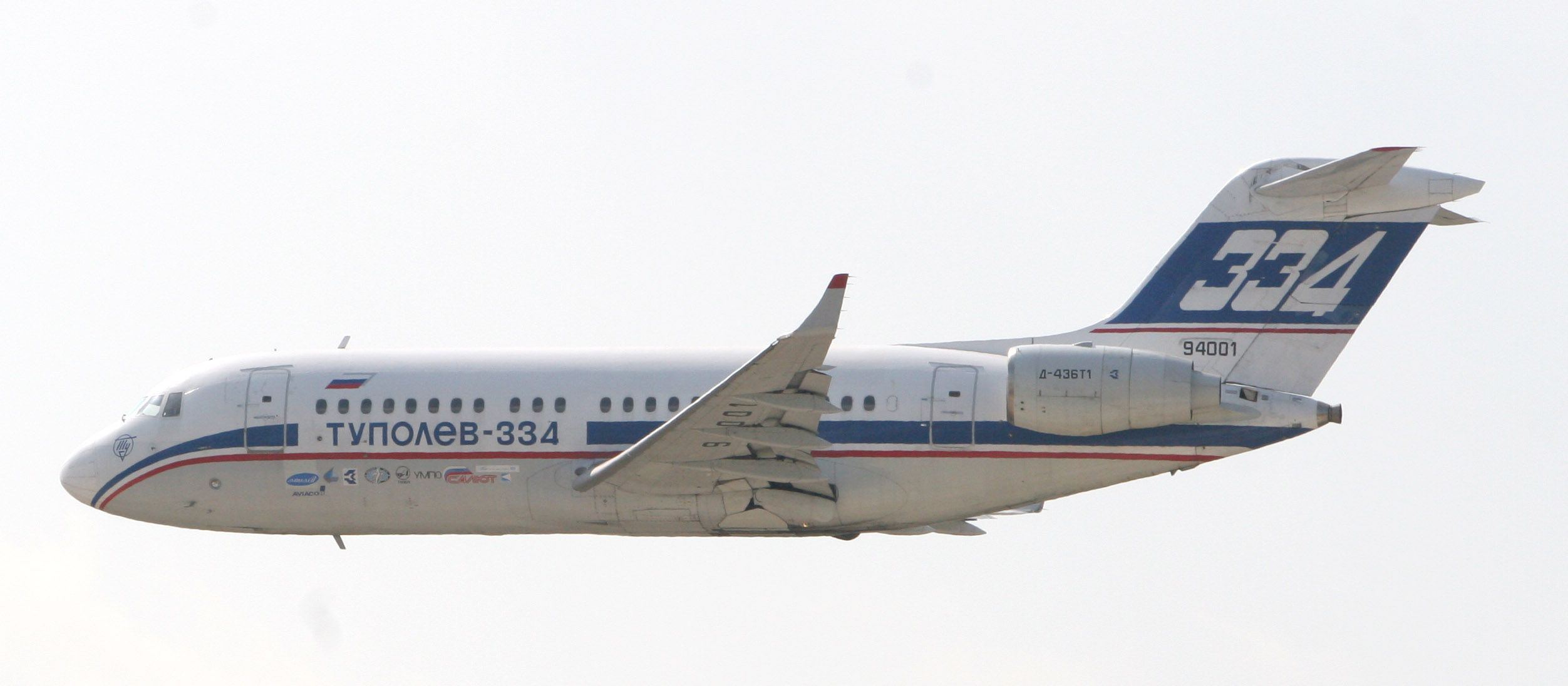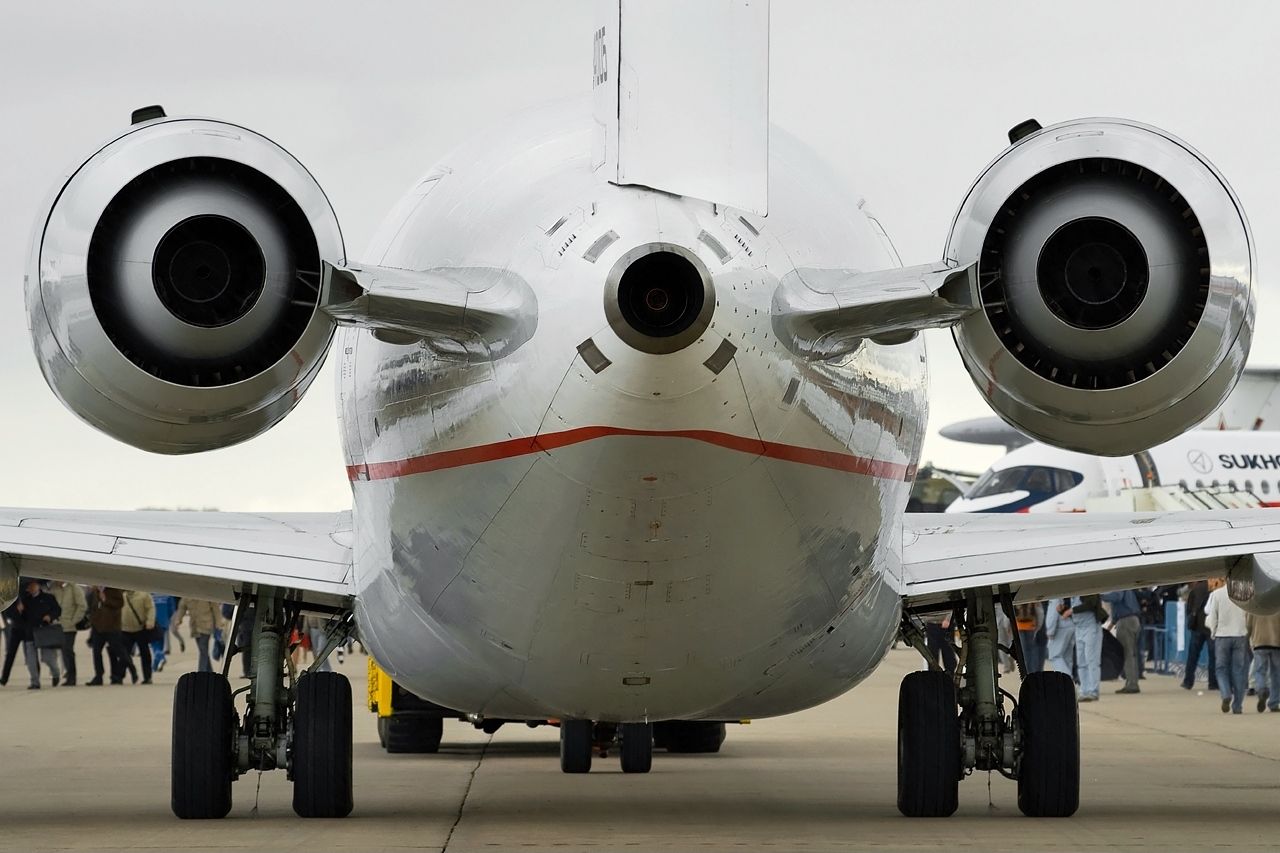The Tupolev Tu-334 was an advanced technology Russian airliner developed to replace the aging Tu-134 and Yak-42 that were in service. During its developmental stages, the aircraft was slated to begin flying in 1995 with Aeroflot, Russia’s flag carrier and one of the oldest active airlines in the world. Unfortunately, the Tu-334 never took off commercially, and the project was eventually scrapped in 2009.
Among the most efficient Soviet airliners
Introduced in early 1989, the Tu-334 was a short-to-medium haul narrow-body jetliner modeled after the Tu-204 twinjet. Many of the latter’s features were incorporated into the design of Tu-334, including the wing and an identical flight deck. The fuselage was a thickened but shortened version of the much larger Tu-204.
Unlike the Tu-204, the new Tupolev aircraft had a T-tail with engines mounted on the sides of the rear fuselage rather than beneath the wings. Additionally, fuel and aerodynamic efficiencies paved the way for a promising future for the Tu-334.
Get the latest aviation news straight to your inbox: Sign up for our newsletters today.
Work on the Tu-334 commenced in the early 1990s, albeit slowly due to funding issues caused by the breakup of the Soviet Union. Eventually, a prototype was unveiled at the Moscow Airshow in August 1995.
It was not until more than four years later that the aircraft made its first flight. After some delay, a Russian type certificate was obtained on December 30, 2003 – more than 14 years after the aircraft type was incepted. In 2007, the Tu-334 performed at the MAKS airshow in Moscow.
Planned variants and prospective orders
There were big plans for the Tu-334. Over the years, eight variants of the Tu-334 were proposed: a combi, a stretched (by 21 inches / 54 cm) extended-range version, a cargo variant, one fueled by liquid natural gas, a further stretched (by 150 inches / 390 cm) version, and several variants with more powerful engines.
As of December 2006, Tupolev received firm orders from seven airlines and letters of intent from 24 airlines to purchase 297 Tu-334s. Then, in late 2008, it was reported that around 100 airlines had expressed interest in placing orders for the aircraft type.
One such customer was Iran, which had plans to assemble the aircraft in the country by 2011 and begin manufacturing in 2015. With this buoyant demand, the manufacturer announced that production was set to begin no later than January 2009. This target, however, never came to materialize.
Decades in the making
In mid-2009, years behind the projected schedule, the Tu-334’s long-drawn-out program came to a halt. After over 34 years, the development of the aircraft was canceled in favor of similar competitors, the Sukhoi Superjet 100 and Antonov An-148.
Stay informed: Sign up for our daily and weekly aviation news digests.
While the Tu-334’s design similarity to the Tu-204 was meant to reduce development time and costs, this ultimately proved to be a failure. The program spanned three decades and cost over $4 billion. Furthermore, the Tu-204, which made its first flight 34 years ago, is still in production – but only two Tu-334s were ever produced, both of which were prototypes.




